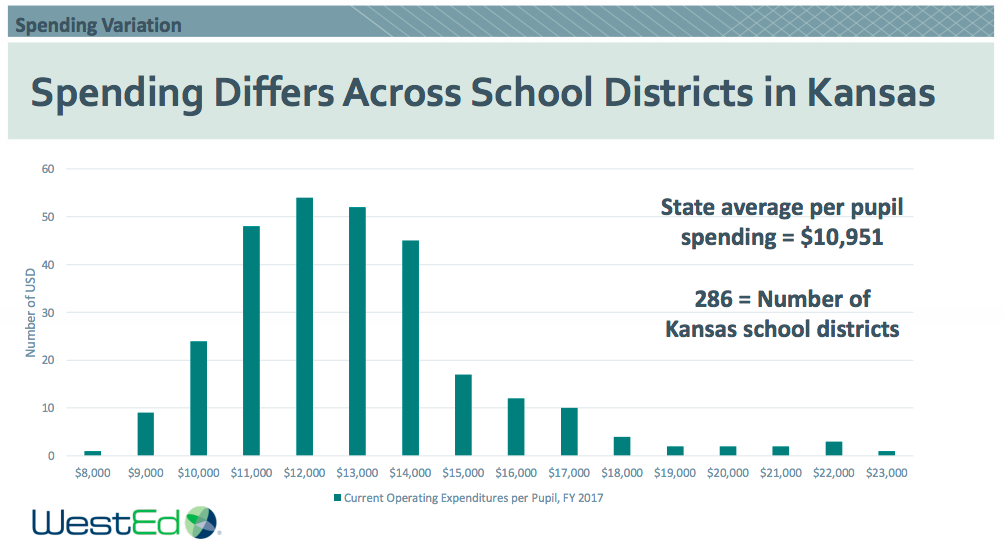Shawnee Mission School District Superintendent Jim Hinson sees the recent Kansas Supreme Court decision and the end of block grant funding as an opportunity to craft a better school finance formula. He met with area lawmakers last week to discuss school funding.
He stressed at a press conference March 16 that he isn’t proposing specific legislation.
“I have no interest in saying we want to sponsor a bill,” Hinson said. He was flanked by school district attorney, Fred Logan. “I do have an interest in what ifs and the underachieving 25 percent of students.”
A House committee this legislative session hosted hearings on a handful of school funding proposals. Most are based on a 1992 school formula.
Hinson said the old formula measured adequacy based on dollar amounts rather than educational outcomes.
“We have an opportunity to determine what is best for students,” Hinson said.
In their recent ruling, Justices explicitly said they would entertain a new funding formula, according to Logan.
“The way is open for a new formula,” Logan said.
Hinson said school officials began brainstorming what’s best for students before the Kansas Supreme Court issued its ruling that said school funding isn’t adequately calculated by the current block grant funding system.
That system held schools harmless while freezing funding under the 1992 formula for two years. Under the old system, the Kansas Legislature established base state aid per pupil, and then district enrollment was weighted based on a number of items. The weightings allowed some students to count as more than one student. For example, a student who used the free-and-reduced lunch program counted as more than one student.
Legislators must craft a new formula by June 30. Hinson said his desire to offer funding solutions is based partially on that deadline. He supported what he called a freeze in the school funding wars a few years ago that resulted block grant funding, hoping legislators would craft a new formula right away.
“The goal was to stabilize,” Hinson said “The ideal situation: You had two years. Get it done in one year.”
However, that didn’t happen.
Hinson now proposes using the amount the top performing schools in Kansas spend as a benchmark for base state aid per pupil.
“You take the highest achieving schools and see how much they’re spending,” he said.
That baseline would be higher than current base state aid per pupil.
“If you decrease money in weighting, you have more available for base state aid per pupil,” Logan said.
Old Formula
In 1992, when the old formula was adopted, students were weighted in four categories. Today, there are 14 weighted categories. Hinson’s proposal would eliminate all but two categories–bilingual and at-risk.
“We could add others,” he said. “We’re just talking about ideas.”
Hinson suggests setting aside extra money for at-risk students and allowing the Kansas Department of Education to control those funds and how they’re spent.
“The state department could be involved in evaluating programs to see if they’re effective,” Hinson said.
Local school boards would enjoy greater flexibility to meet the needs of their individual districts. He also recommends a formula with a provision that automatically increases aid based on the consumer price index or CPI.
Hinson said the district’s interest is a formula that really benefits the needs of children, and Logan said reworking the 1992 school financing formula has been part of the school district’s legislative platform since its inception.
Before 1992, wealthier districts like Shawnee Mission and Blue Valley could use their property taxes however they wanted, Logan said. The Court ruled that funding mechanism wasn’t equitable, and Logan argues the pendulum swung too far in the other direction.
“The 1992 formula went too far the other way, and took local school boards out of the game of operations,” Logan said. “School boards went from unlimited authority to near zero authority.”
Some lawmakers question whether Hinson’s suggestions meet constitutional muster for equitability, however. Logan said the Court ruled using local funding, also known as LOB, is constitutional.
“The Court recognized how important local authority has been for making the 1992 formula work,” Logan said.


